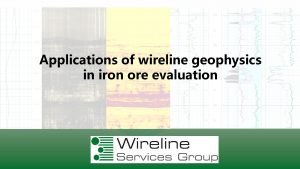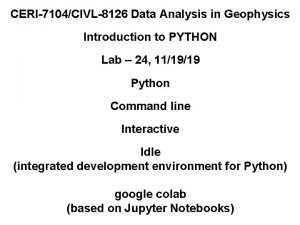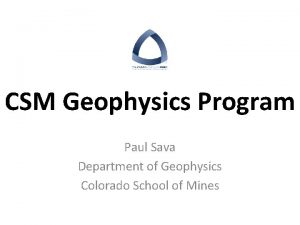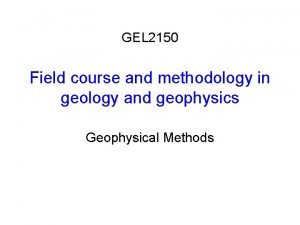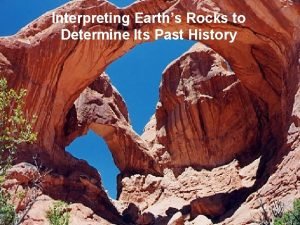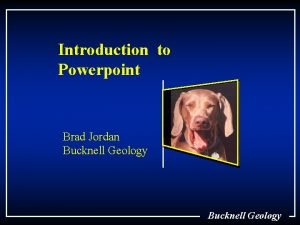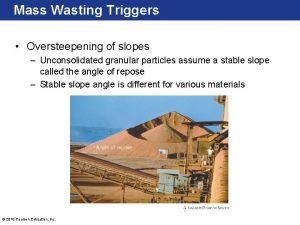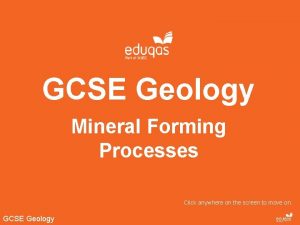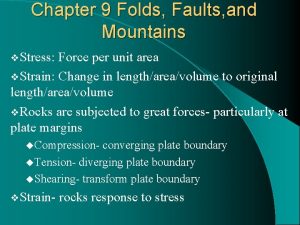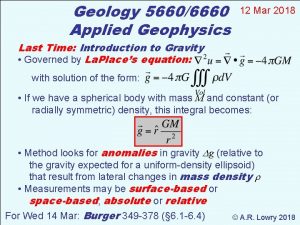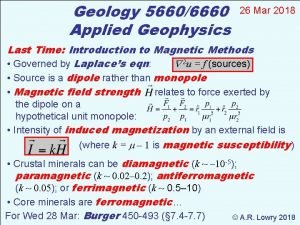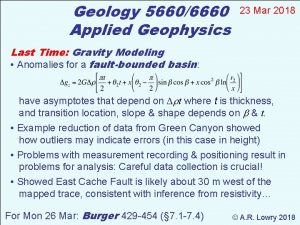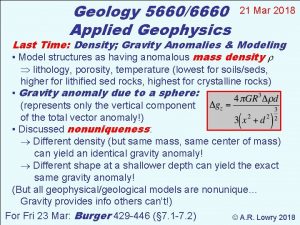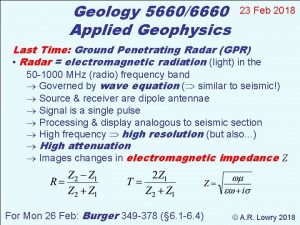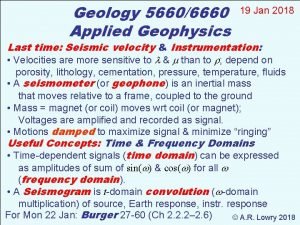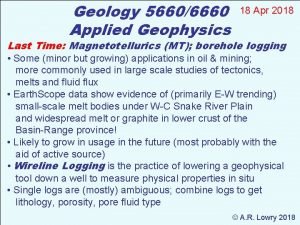Geology 56606660 Applied Geophysics 2 Mar 2018 Last









- Slides: 9

Geology 5660/6660 Applied Geophysics 2 Mar 2018 Last Time: Ground Penetrating Radar • Radar reflections image variations in Dielectric constant r (= relative permittivity) 3 -40 for most Earth materials; higher when H 2 O &/or clay present • Radar attenuation similar to seismic: where: higher for clay, silt, brines; limits imaging to upper few m • Velocity is not estimated (rather depth is approx. from ~V) (but can be estimated from NMO or diffraction moveout!!!) • Standard “processing” includes static corrections for elevation, filtering, AGC For Mon 12 Mar: Burger 349 -378 (§ 6. 1 -6. 4) © A. R. Lowry 2018

Introduction to Gravity, Magnetic, & DC Electrical methods are all examples of the Laplace equation of the form: 2 u = f (sources), where u is a potential, is the gradient operator Notation: Here, the arrow → denotes a vector quantity; the carat ^ denotes a unit direction vector. Hence, the gradient operator is just a vector form of slope… Because Laplace’s eqn always incorporates a potential u, we call these “Potential Field Methods”.

Gravity We define the gravitational field as And by Laplace’s equation, (1) given a single body of total mass M; here 2 Nm -11 G is universal gravitational constant = 6. 672 x 10 kg 2 Integrating equation (1), we have (2)

IF the body with mass M is spherical with constant density, equation (2) has a solution given by: Here r is distance from the center of mass; is the (unit) direction vector pointing toward the center. Newton’s Law of gravitation: So expresses the acceleration of m due to M! has units of acceleration Gal in cgs (= 0. 01 m/s 2) On the Earth’s surface, m/s 2

HOWEVER, r is not radially symmetric in the Earth… so is not constant! Gravity methods look for anomalies, or perturbations, from a reference value of at the Earth’s surface: gobs r 1 r 0 gref

Example: Global Free-Air Gravity Field from GRACE + GOCE + satellite altimetry + surface measurements… WGM 2012 model from Bureau Gravimetríque International

Gravity Measurements: I. Absolute Gravity: Measure the total field time of a falling body vacuum prism laser ~2 m • Must measure time to ~10 -11 s; distance to ~10 -9 m for 1 gal accuracy! • Nevertheless this is the most accurate ground-based technique (to ~3 gal) • Disadvantages: unwieldy; requires a long occupation time to measure

Gravity Measurements: II. Relative Gravity: Measures difference in at two locations. • Pendulum: difference in period T: l Errors in timing of period T ~0. 1 mgal • Mass on a spring: MDg = k. Dl or Dg = k. Dl/M Worden and Lacoste-Romberg are of this type (“zero-length” spring of L-R yields errors around 6 gal) length l mass M spring constant k

Gravity Measurements: III. Satellite Gravity: Measure (from space) the height of an equipotential surface (called the geoid, N) relative to a reference ellipsoid.
